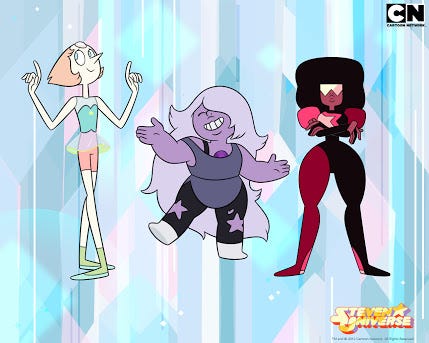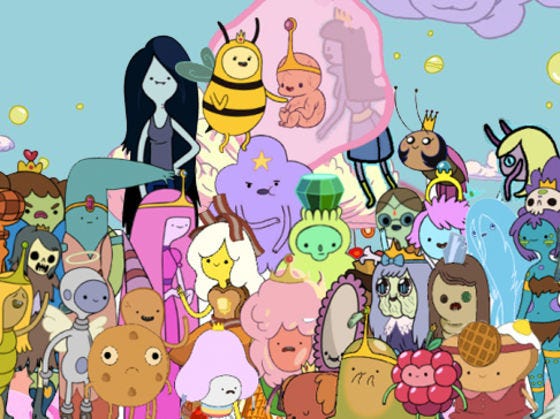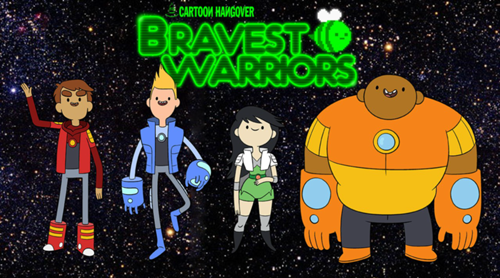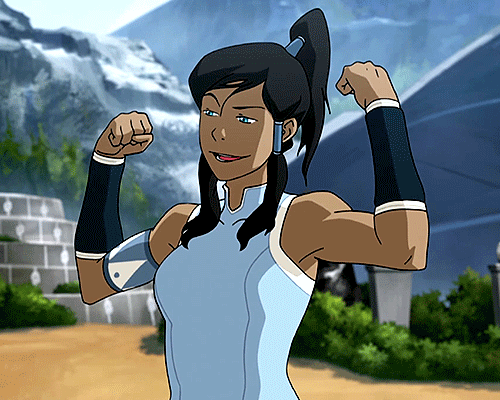This content has been archived. It may no longer be relevant

When you first hear the word animation the first images that may pop into your head are your childhood favorites. Series or films like Shrek, Toy Story and Rugrats. Animation is defined as the art of illusion of motion, animation uses a sequence of images to create a scene to give the illusion of continuous movement. This illusion has been seen in many cultures globally used animation in storytelling pre modern-technology, an example of this is cave paintings in the paleolithic era. That then evolved to images seen in pottery seen throughout the Greek and Roman period, hieroglyphics seen throughout various Egyptian dynasties and Shadow Puppets used in various regions across Asia.

Over centuries of storytelling, the devices used to create this motion of moving objects has grown immensely. The first actual animation dates to the 17th century, a device called the Magic Lantern was created, it was a machine that projected images onto the wall and since then the process of creating animation has developed rapidly.
The stories told in animation vary from culture to culture but there are figures that persist across cultural barriers that are recognizable. In America, we have a long history of animation, in 1928 Walt Disney released Steamboat Willie, a short black, and white film. The film had sound and was considered the first appearance of Disney’s Mickey Mouse. Since then Disney has become one of America’s most beloved animation houses. Its competitors are Cartoon Network and Nickelodeon, there are other animation studios worldwide but as far as American entities people like think of the three aforementioned.
When people think of American animated character they tend think of Mickey Mouse, Spongebob, and Bugs Bunny. There are countless characters that have entranced animation fans everywhere,however, I think often of the future of animation and how it can be an agent of change. Over the last few years, we have seen contemporary cartoons talk about issues that hit home for many people worldwide. An extension of that are the types of characters we see on screen, more are deviating from the standards. We are seeing shows with characters that are gender nonconforming, fat, and of color. In this essay, I am examining 3 beloved American series of the last decade.
Body positivity is a movement that says all bodies are worthy of being seen, valued, and protected. With the body positivity movement, it attempts to highlight the fact that white, thin bodies are commodified as the norm. The movements try to subvert that by highlighting a variety of bodies, accompanying identities and abilities. The norm in American culture is, white slender characters, this is translated in movies, novels, and unfortunately animation. I do believe that the field of animation is changing due to the age of internet,however, in terms of mainstream animation the change would be contingent on the rise of minorities in the boardroom.

Steven Universe is a series produced by Cartoon Network and created by Rebbeca Sugar in 2013. Steven Universe has been regarded as one of the best examples of body positivity in the most recent years of American animation. The show stars Steven and the Crystal gems who are a group of Aliens (Garnet, Pearl, and Amethyst) who act his guardians. It should be noted that the show displays a non-nuclear family, that features the Crystal Gems and Steven’s father, Greg. Steven is a young boy who is chubby, with curly hair, though his race it is not stated it is assumed he is white. Steven can be seen wearing a midriff bearing pink t-shirt and his guardians are all aliens but they are coded as female and of color. Amethyst is the shortest of the three, sticky with lilac skin and white hair. Amethyst is extroverted often seen being very confident and playful; she even twerks. Pearl, is slender, tall woman, seen with light pink hair and is seen doing ballet moves like pirouettes. Garnet, the third of the crystal Gems, she is a dark skinned woman as her skin is red-violet, she has a rectangular afro, she’s wide hipped and the tallest of the gems. Steve’s mother Rose-Quartz is a plus size woman, with luxurious pink curls and Steven’s father Greg is shorter than Rose Quartz, noticeably hairy and balding. Without giving too much away several characters engage in romantic pairings throughout the series, characters that deviate from the norm are even seen as desirable. The crystal gems are seen doing fusions, a dance like transformation where two or more Gems can become one entity.
The variation of townspeople in Beach City seen throughout the show that interact with the Crystal Gems and Steven are very diverse such as the South Asian family that consists Mr. Maheswaran and Dr. Maheswaran and Connie. Connie is a young girl with dark skin and waist-length dark brown puffy hair, prominent nose, thick eyebrows, and is slightly taller than Steven.
The show primarily focuses on characters that are coded as femme but none of them are limited by pesky tropes, displaying the vast range of motivations and ability levels. Steven Universe steers away from the archaic damsel trope, hypersexualized seductress, and the overmasculine woman.
Another family that resides in Beach City is the Fryman family, which consists of Mr.Fryman, Pee Dee, and his other son Ronaldo. Other minor characters include Dewey, The Pizza Family, They resemble french fries. There are several different townspeople seen throughout the show that are humans that are diverse as their race and occupations.

Pendleton Ward is another animator who displays a wide range of body types in his series. Ward is best known for Adventure Time and Bravest Warriors. Most people know Adventure time as an animated series that focuses on a young human boy named Finn and his dog Jake. The two reside in the post-apocalyptic Land of Ooo, where they interact with Princess Bubblegum, the Ice King, Marceline the Vampire Queen, BMO, and others. Adventure Time is widely popular and is about to approach its conclusion. Bravest Warriors is a web series created by Ward, which follows four teenagers who travel across the universe for hire work to keep the peace on various planets. One of the most recognizable things about Pendelton Ward’s work is the varying body types. Ward’s style is simple but suggests a variety of shapes and there is no standard. While there are humanoids in both series the majority are a nonhuman entity, who have bodies that are asymmetrical or oddly shaped. In Adventure Time you will notice that a lot of the female characters are princesses but do not look like the idealized versions of female princesses that we see in Disney films. An example of this is Lumpy Space Princess.The humanoid characters in Bravest warriors range the gamut of skin complexions and sizes. An example of this is our main cast: Chris, Beth, Wallow, and Danny.

Avatar the Last Airbender and the Legend of Korra are both series that also unapologetically have a range of diverse characters. The two series are both located in a fantasy world where there’s a great influence of Asian and indigenous cultures. Though their races are never explicitly stated it is assumed they are people of color given the physical features and cultural references. In American animation, this is a rarity having an show with characters of colour as central characters because the norm is white. In the genre of fantasy is overwhelming Eurocentric, where European folklore is prioritized. The two series reflect the different types of features that exist in the Asian diaspora. It’s important to highlighting Asiatic people and Indigeneity because too often those cultures are stereotyped in American media. The two titular characters Aang and Korra are very different. Aang is a lithe pree-teen boy with tattoos compared to athletic Korra teen girl who is darker skinned. The world of Avatar subverts tired tropes that by creating believable characters of color; within this diversity, there are elders and young people portrayed positively. Age does not deter them from their goals and they are never coded as weak. This is seen with the Beifong siblings who are visibly graying women. The children of Tenzin are the great example of kids reaching their potential, where they are not seemed as bumbling or overwhelmingly naive. There’s also disabled characters throughout the two series both good characters and bad characters portrayed as humans. An example is Toph Beifong, a blind character, whose development is used to challenge assumptions we have about people with disabilities. There are several minor characters such as a paraplegic Haru, and various villains.
The creators with all depictions tried to make their characters well rounded as possible, which is one of the worlds of Avatar’s greatest strengths.

In conclusion, characters in American animation are more than the sought after heroes and princess archetypes, in terms of body types/figures. Character design should be varied and express different personalities of the people that inhabit the fictitious worlds we adore. By working to make more inclusive characters we work against age -old stereotypes that make characters fall under the dichotomy of good and evil. Often with these dichotomies, there are false equivalencies about race and gender.The aforementioned shows give us examples of how we can go against the mold, making minority characters valued and visible. While there are several shows, that I didn’t mention I do recommend look at 90s Nicktoons, Dreamworks animated films like Prince of Egypt and Road to Eldorado. Also while I am unsure of any anime that body positive ideas, I am sure that there are examples out there. In terms of looking for more inclusive works animation fans have to be ardent of going beyond Disney’s prototype. I hope people follow the work of Pendleton Ward, Bryan Konietzko / Michael Dimartino, and Rebecca Sugar as starters.
.Author: Brittney Maddox
Editor: Han Angus
 From Pretty Little Liars to May December: Grooming in Media
From Pretty Little Liars to May December: Grooming in Media  X-Men ‘97: An Adventurous Series Filled with Nostalgia
X-Men ‘97: An Adventurous Series Filled with Nostalgia  The Disappointing Reinvention of Netflix’s Avatar: The Last Airbender
The Disappointing Reinvention of Netflix’s Avatar: The Last Airbender  Iwájú: A Triumphant Tale of Two Friends and Two Worlds
Iwájú: A Triumphant Tale of Two Friends and Two Worlds  One Day is a Wonderfully Heartbreaking Love Story
One Day is a Wonderfully Heartbreaking Love Story 